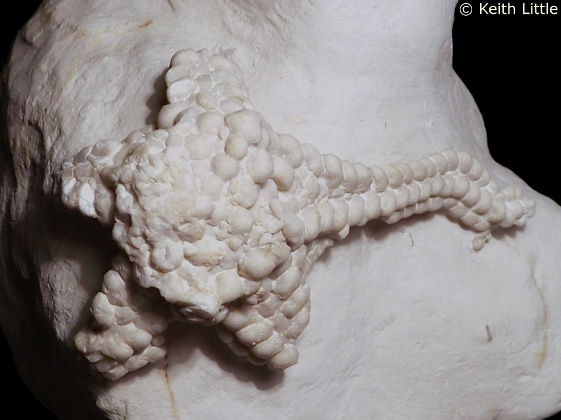 A
A
B
|
Stauranderaster boysii (Forbes) |
A scarce form of Stauranderastrid known from a small number of incomplete specimens. The general form of the crown, the enlarged primary interadials, and the ornament of the ossicles are all quite similar to the White Chalk contemporary Manfredaster bulbiferous and isolated ossicles could be mistaken, but S. boysii has the typical narrow and elongate arms of a Stauranderaster.
 A A |
|
1). Stauranderaster boysii - Aboral view of a remarkable new semi-complete articluated specimen (x1.8, Barrois' Sponge Bed, Seaford Chalk, Thanet Coast, Kent, in the collection of Keith Little). B) Detail of a large primary interadial or centro-dorsal from a partial specimen, comparable to those of Manfredaster bulbiferous (x7, White Chalk, Bromley, Kent, Simmons Collection, BMNH (British Museum (Natural History) London) 46600). Image A © 2012 Keith Little, by kind permission. Image B © 2012 The Natural History Museum, by kind permission.
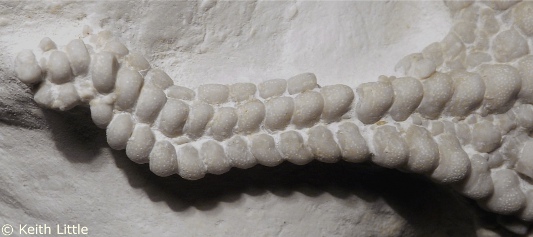 A A |
|
2). Stauranderaster boysii - Aboral (A) and lateral (B) views of an articulated arm (x3.5, Barrois' Sponge Bed, Seaford Chalk, Thanet Coast, Kent, in the collection of Keith Little). Images © 2012 Keith Little, by kind permission.
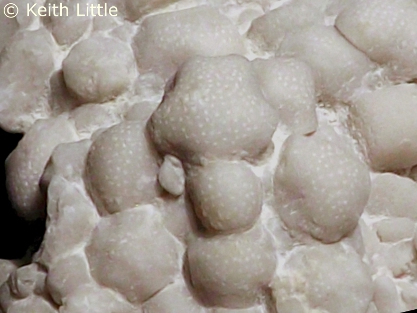 A A |
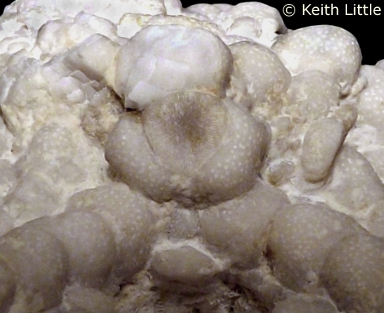 B B |
3). Stauranderaster boysii - A) Detail of the ossicles of the disc (x5); B) Detail of the madreporite and surrounding elements of the central disc and arms (superomarginals) (x4). Barrois' Sponge Bed, Seaford Chalk, Thanet Coast, Kent, in the collection of Keith Little. Images © 2012 Keith Little, by kind permission.
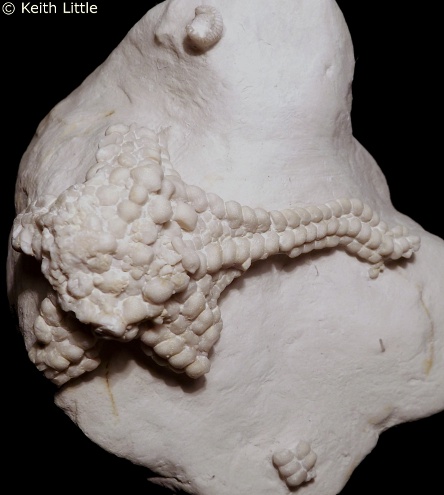
4). Stauranderaster boysii - A general view of the specimen shown above (note Tylocidaris clavigera spine top centre) (x1.5, Barrois' Sponge Bed, Seaford Chalk, Thanet Coast, Kent, in the collection of Keith Little). Image © 2012 Keith Little, by kind permission.
5). Stauranderaster boysii - general view of a partial specimen displaying jumbled central disc and crown ossicles, and a single well articulted arm (x1.4, White Chalk, Bromley, Kent, Simmons Collection, BMNH (British Museum (Natural History) London) 46600). Image © 2012 The Natural History Museum, by kind permission.
6). Stauranderaster boysii - side view of the arm from the above specimen (x3, White Chalk, Bromley, Kent, Simmons Collection, BMNH (British Museum (Natural History) London) 46600). Image © 2012 The Natural History Museum, by kind permission.
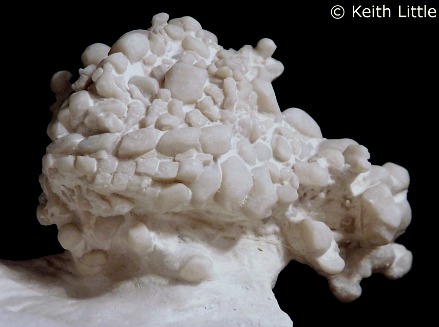
7). Stauranderaster cf. boysii - A pelleted (?) example exposing the oral surface of an articulated arm (x3.6, Seaford Chalk, Thanet Coast, Kent, in the collection of Keith Little). Image © 2012 Keith Little, by kind permission.